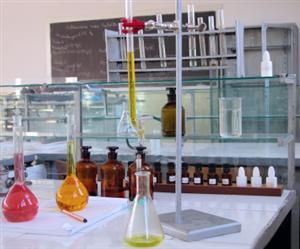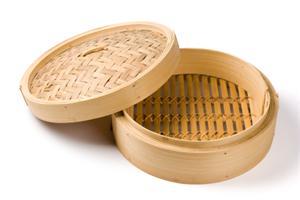| Complexity level: | 6 |
| Project cost ($): | 10 |
| Time required: | 3 hours for experiment, 2 hours for observation |
| Material availability: | Students should prepare their own vegetables. The other equipments should be provided by the school. |
| Safety concerns: | None |
Hypothesis
Boiling destroys more vitamin C content than steaming.
Overview
About Vitamin C
Vitamin C is a water soluble mineral and is easily oxidized, especially in aqueous solutions. Vitamin C is sensitive to light, metals and heating.
Uses of Vitamin C
Vitamin C, also known as ascorbic acid, is essential in the body. It helps in the production of cartilage, and is an important component for the formation of collagen in bones, muscle and blood vessels. Vitamin C also improves iron absorption. Fruits and vegetables are rich sources of Vitamin C.
Deficiencies of Vitamin C
A deficiency of Vitamin C causes scurvy, a type of disease which causes the most noticeable symptom- bleeding gums. Some early warning signs of Scurvy include loss of appetite, the onset of diarrhea, shortness of breath, general weakness and fever. Left untreated, the individual may become irritable and/or depressed, experience leg pain, have a loss of muscular power, observe swelling over long bones of the body, become anemic and become pale. In addition, there would be poor wound healing, dry eyes, skin thickening (hyperkertosis) and bleeding (especially gum bleeding and bleeding behind the eyes causing prominence). Internally, the bleeding may occur at the joints of the ribs and sternum, thus resulting in a discoloration under the skin of the chest. The individual may have general skin bruising and may observe blood in the urine or stool. This bleeding can also affect the hair follicles, giving rise to pinpoint bleeding around the hair follicles.
Scientific Terms
Materials
For this experiment, you will need:
- 12 carrots
- Knife
- Stainless steel pot
- Steaming Basket
- Stopwatch
- 1 liter of water
- Distilled Water
- 6 Vacuum Packing Bags
- Vacuum electrical packer
- 2 Pipettes
- Burette
- Colander
- 750 milliliter Beaker
- 30 milliliters of 10% H2SO4
- 30 milliliters of 1% Starch Solution
- 100 milliliters of iodine solution
- 1 Marker
Procedure
1. Wash and prepare the carrots for cooking.
2. Cut the carrots into 3cm cubes.
3. Rinse the chopped carrots in cold water thoroughly.
4. Pour 1 liter of water into the stainless steel pot, add 100 cubes of carrots into the pot of water.
5. Turn on the stove to boil the pot of carrots. Start the stopwatch once you turn on the stove.
6. Take out 30 cubes of carrots after the first 15 minutes. Leave the rest to cook in the pot. Cool the 30 cubes of carrots in the colander for 10 minutes. Seal this batch in a vacuum pack and label it as “15 Minutes Boil”
| Sample | Weight of Sample (g) | Amount of Iodine Used (ml) |
| 15 Minutes Boil | ||
| 30 Minutes Boil | ||
| 45 Minutes Boil | ||
| 15 Minutes Steam | ||
| 30 Minutes Steam | ||
| 45 Minutes Steam |
7. Another 15 minutes later, take out another 30 cubes of carrot and leave the rest in the pot. Cool the 30 cubes of carrots in the colander for 10 minutes. Seal this batch in a vacuum pack and label it as “30 Minutes Boil”
8. At the 45 minute interval, turn off the stove and remove 30 carrot cubes. Cool the 30 cubes of carrots in the colander for 10 minutes. Seal this batch in a vacuum pack and label it as “45 Minutes Boil”
9. Remove all remaining carrots from the pot.
10. Place the steaming basket over the water. Add 45 cubes of carrots into the steaming basket.
11. Repeat step 5 to 8, labeling the bags:
a. 15 Minutes Steam
b. 30 Minutes Steam
c. 45 Minutes Steam
12. Leave the bags in the refrigerator overnight.
Preparing the Vitamin C indicator
1. Place the 750 milliliter beaker onto the electronic balance and tare to set the scale to 0. Add the carrot cubes from “15 Minutes Boil”.
2. Add 400 milliliters of distilled water to the beaker.
3. Add 5 milliliters of 10% H2SO4 (sulfuric acid) using a pipette
4. Add 5 milliliters 1% starch solution to mixture using another pipette.
5. Titrate the mixture with iodine solution to a blue-black end point that lasts for at least 25 seconds
6. Record the amount of iodine solution used in the table below

Results
To determine the amount of Vitamin C present, use the formula below:
1. Take the squared milliliter of iodine used and subtract 0.5
2. Multiply the answer from 1 by 0.1
3. Multiply the answer from 2 by 88
4. Divide the answer from the weight of the carrots
The following data is obtained from the experiment.
Boiling
| Cooking time | Mass of carrot sample (g) | Volume of iodine (ml) | Amount of Vitamin C (mg/100g) |
| (mins) | |||
| 15 | 100 | 0.97 | 4.1 |
| 30 | 96 | 1.2 | 6.4 |
| 45 | 101 | 1.03 | 4.6 |
Steaming
| Cooking time | Mass of carrot sample (g) | Volume of iodine (ml) | Amount of Vitamin C (mg/100g) |
| (mins) | |||
| 15 | 100.2 | 1.24 | 6.5 |
| 30 | 98.4 | 1.46 | 8.6 |
| 45 | 99.6 | 1.3 | 7.1 |
Conclusion
The experiment result shows that the hypothesis is only partially correct. Boiling does destroy more vitamin C content than steaming. However, over time, the vitamin C content does not steadily decrease. In fact, it increased from 15 minutes to 30 minutes. This information can prove valuable to our health because it educates us on how long we should cook our vegetables. In addition, we understand how the different cooking methods help to preserve the nutritional content in our food. With good cooking methods, we are able to maximize the nutritional benefits of our food.
Also consider
What results would you yield if a different type of vegetable was used?
How can you minimize the effect of random error in this experiment?
Try doing this experiment with different methods of cooking. For instance, would deep frying the carrots give a lower vitamin C content overall?
References
http://en.wikipedia.org/wiki/Vitamin_C#Deficiency

